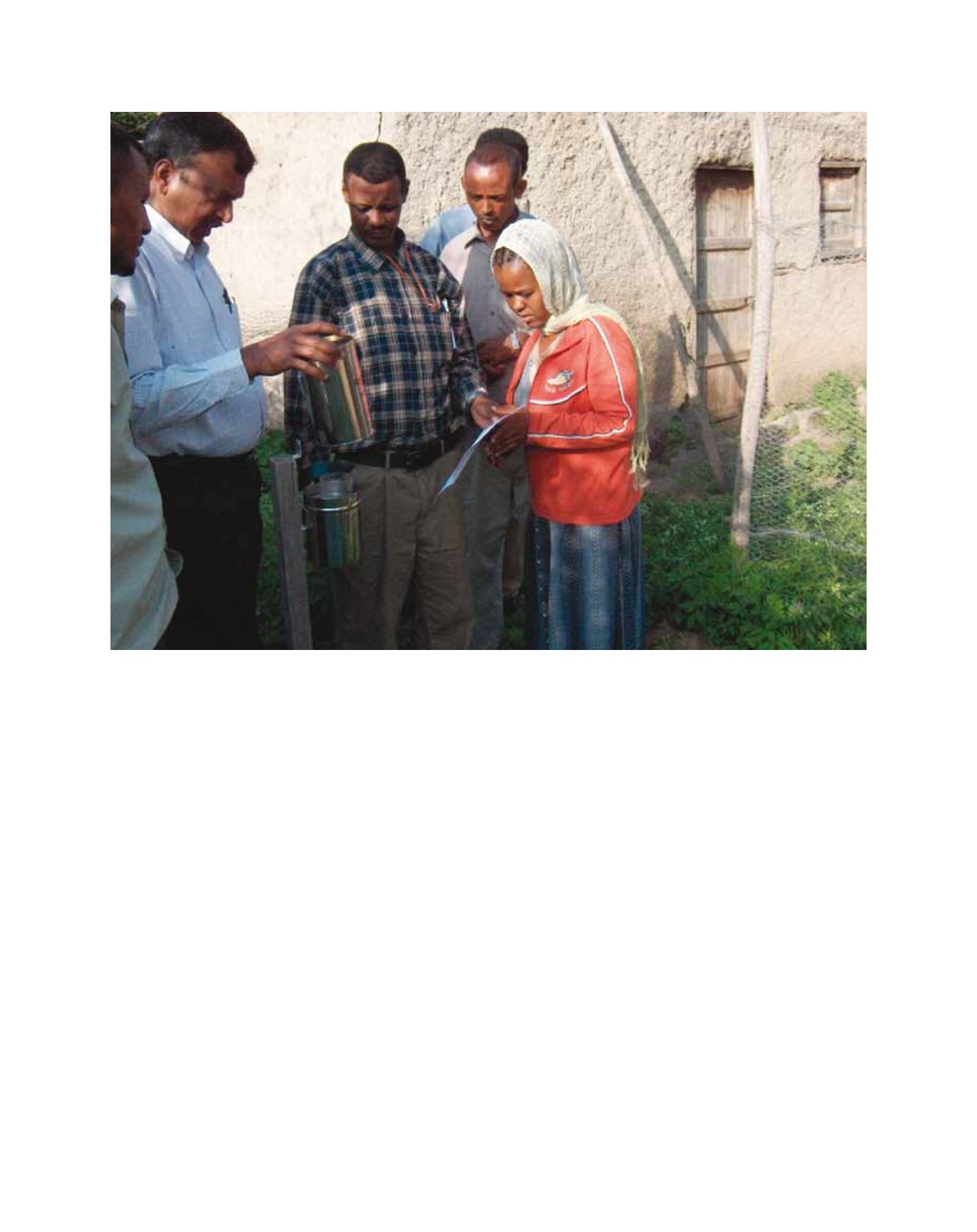

[
] 244
C
ommunities
tions and non-availability of timely information in a user-friendly
format. Fortunately, Eastern Africa is a region where climate is
relatively more predictable due to the strong correlation with
El Niño/La Niña episodes. In a study conducted to evaluate the
potential benefits of seasonal climate forecasts, we asked farmers
to evaluate the skill in forecasts and assess their usefulness in
planning and managing their farms. We used hindcasts provided
by the International Research Institute for Climate and Society
for 43 short rain seasons (October-December) starting from
1961, for Katumani in the Machakos district.
Farmers rated the forecasts, comparing the predicted with the
observed seasonal conditions by grouping the seasons into two catego-
ries – below normal and above normal for maize growing. According
to the farmers’ assessment, 35 of the 43 predictions were extremely
good and use of these forecasts for farm management could result
in substantial productivity gains during wet years and in minimiz-
ing losses during dry years. Of the eight misses, farmers considered
the four seasons in which below-normal rainfall was predicted but
above-normal rainfall was received to be less of a problem, since they
represent a lost opportunity but involve no loss on investment. The
real problem is with the four seasons that were predicted to be above
normal but turned out to be below normal. These are the seasons in
which investments guided by forecasts could potentially lead to a loss.
However, the observed prediction skills are above the farmer accept-
able level of 80 per cent, which is four out of five seasons.
Evidence from our studies clearly establishes that
significant benefits can be derived from the use of
climate information if it is interpreted and presented in
a way that can easily be understood by the end users.
Farmers were able to appreciate the value of forecast
information when this was interpreted in terms of its
agricultural significance and presented in the form of
an advisory that summarizes key potentials and risks
associated with the type of season predicted. When the
usefulness of the advisory service was evaluated after
three seasons, most farmers considered the advisories
to be extremely useful in planning farm operations,
an observation well supported by the willingness of
87 per cent of the farmers interviewed to pay for the
service if required.
Given the general complexity and extreme varia-
bility associated with climate, it is not only difficult
to perceive the trends but also difficult to measure,
analyse and explain them accurately. However,
the trends derived from longer-term observations
and predictions at seasonal scale, which are fairly
reliable, have the potential to make significant
contributions to addressing the misperceptions
and gaps in understanding that have come to light
through these studies.
A woman farmer in Ethiopia explaining rainfall records that she has been recording on her farm
Image: ICRISAT
















